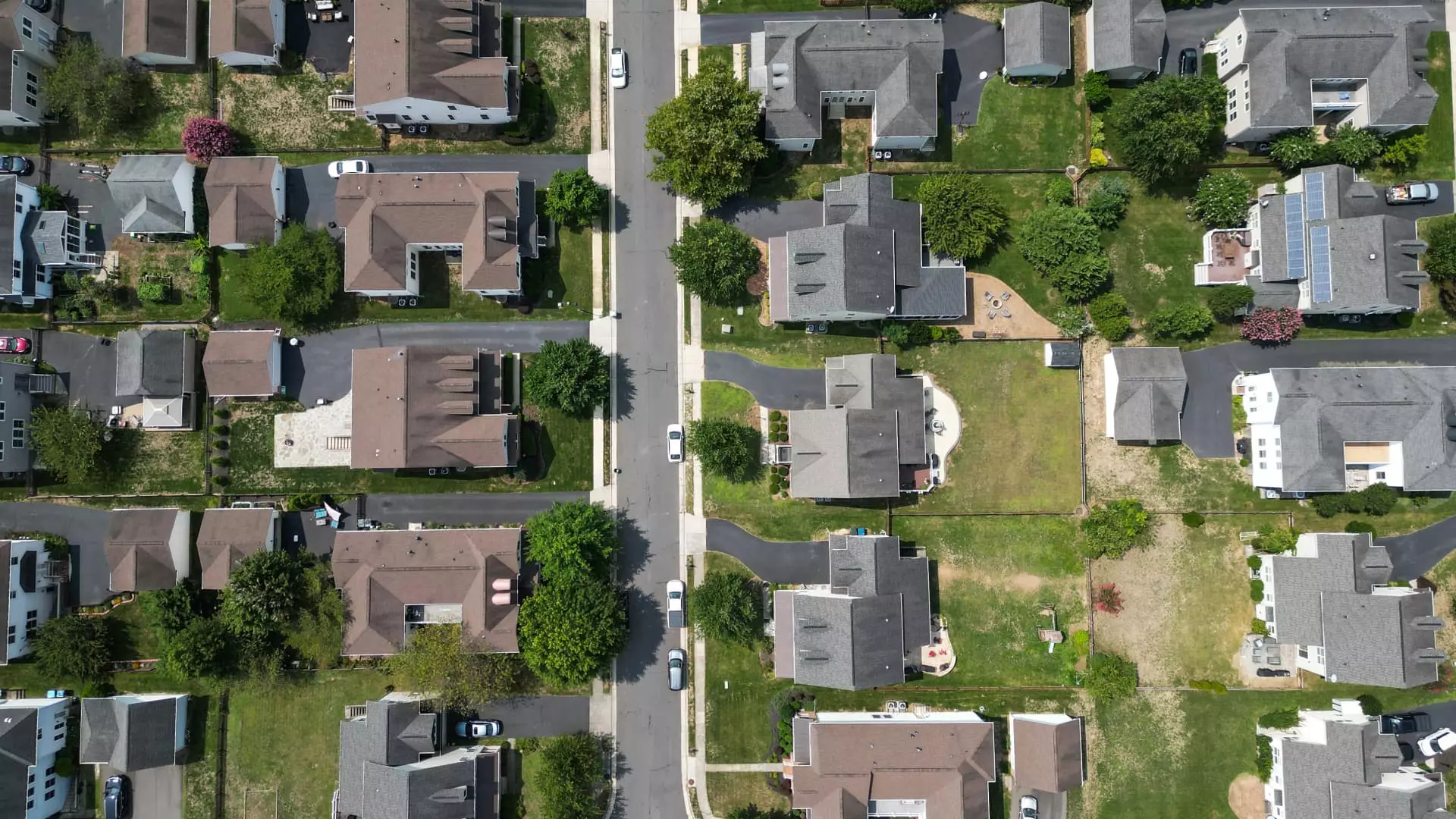In an unsettling turn of events, mortgage rates reached 6.85%, marking an alarming resurgence after a brief respite. Those hoping for a sustained drop in the average rate on a 30-year fixed mortgage were met with disappointment as they saw a sharp increase of 22 basis points on Monday, followed by an additional 3 basis points on Tuesday. This is not merely a statistical blip; it’s a significant worry for prospective homebuyers navigating a tumultuous market. The ups and downs resemble a chaotic amusement park ride, where one day it appears that there might be room to breathe, only for the next to plunge into anxious uncertainty.
The correlation between mortgage rates and the bond market is a delicate dance, and it was fully on display last week. When President Trump introduced global tariffs, investors panicked, triggering a drop in mortgage rates to levels not seen since the previous October. This trend quickly evaporated, as the impulsive reactions of the stock market began to stabilize, exposing the fragility of the mortgage rate landscape. As Matthew Graham from Mortgage News Daily aptly expressed, the initial rate drop was a “knee-jerk reaction,” now replaced by a cautious optimism among bond traders. However, this “less panicked” sentiment does little to assuage the fears of buyers needing mortgage financing.
Economic Concerns and Housing Market Dynamics
With home prices remaining exorbitantly high and economic uncertainty brewing like a thunderstorm, the spring housing market is more of a conundrum than a promise. Danielle Hale from Realtor.com notes that a surge in properties for sale does exist, yet this is overshadowed by the cost of entry into the market. The shrinking confidence in personal job security is another shadow looming over potential buyers, discouraging many from making what is often one of the most significant financial commitments of their lives.
The unfortunate reality is that while the spring season should symbolize a renaissance for the housing market, it is instead characterized by stagnation. The modest increase in pending home sales in February didn’t come close to inspiring confidence; the slight hike of 2% was, in truth, accompanied by a concerning 3.6% decline year-over-year. Despite the generally optimistic narrative pushed by some economists, the data indicates that we are still operating well below historical norms. To put it bluntly, the mortgage rates that dance upwards like clock hands are alienating a growing pool of homebuyers who find themselves priced out in a suddenly unforgiving landscape.
The Lurking Threat of Economic Indicators
What’s more troubling is the impending arrival of critical economic indicators, including the consumer price index and producer price index. These reports play an influential role in shaping market reactions and could determine the next course of mortgage rates. As the analysts hold their collective breaths, the fate of many potential homeowners hangs in the balance. If these indicators signal adverse economic conditions, we might see a further spike in rates, exacerbating the current crisis.
The mortgage industry faces a threatening cycle where rising rates limit affordability, and diminished purchasing power acts as a barrier to demand. It’s a vicious loop that feeds on itself—higher rates deter buyers, and fewer buyers mean that sellers may hesitate to enter the market, which in turn propels prices upward due to scarcity. Homebuyers today are effectively caught between the stone of high interest rates and the hard place of soaring home costs. They are not just facing higher monthly payments; they’re looking at an increasingly impossible task of achieving homeownership.
The world of mortgages could indeed have benefited from greater stability, but the reality is anything but guarantees. As the market recoils and prepares for the next economic revelations, those contemplating a home purchase should brace themselves for a turbulent journey, one filled with far more questions than answers as they navigate these treacherous waters.


Leave a Reply